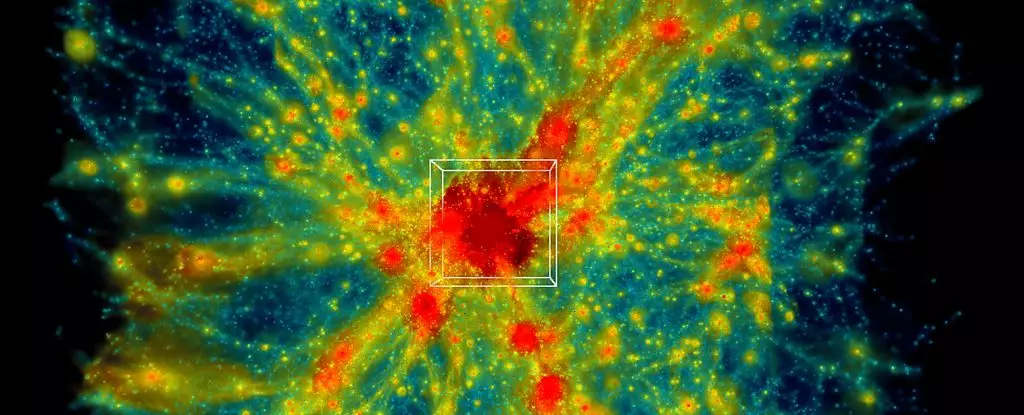In an unprecedented achievement, scientists at Oak Ridge National Laboratory (ORNL) in the United States have successfully conducted the most extensive astrophysical simulation of the universe ever attempted. This monumental milestone was reached in November 2024 when researchers utilized the Frontier supercomputer, comprising 9,000 computing nodes, to simulate a volume of the universe spanning over 31 billion cubic megaparsecs. This groundbreaking project, dubbed ExaSky, aims to unlock the secrets of the cosmos, enhance our understanding of the universe’s evolution, and delve deeper into the enigmatic nature of dark matter.
One of the principal architects of this simulation, physicist Salman Habib from Argonne National Laboratory, highlights the dual nature of the universe: dark matter, which interacts only through gravitational forces, and conventional atomic matter. To gain insights into the universe’s dynamics, it is essential to simulate both components, encompassing gravity and other physical phenomena such as star formation, black hole creation, and the behavior of hot gas. As Habib aptly puts it, the simulation endeavors to encompass all features of astrophysics, likened to an “astrophysical kitchen sink.” This complexity underscores the importance of cosmological hydrodynamics simulations in modern astrophysics.
The vastness of space presents a unique challenge for astrophysicists: when observing the cosmos, they are not only looking across immense distances but also traversing through time. Each observation offers a snapshot of the universe’s history, creating a puzzle that must be pieced together from billions of years’ worth of cosmic changes. However, capturing these transformations in real-time is impractical due to the lengthy processes at play on a cosmic scale. This limitation makes simulations imperative for understanding the universe’s past and forecasting its future.
The intricacies of space necessitate advanced mathematics and the utilization of powerful supercomputers such as Frontier. Simulating the universe is a formidable task, often requiring that some variables be set aside for computational efficiency. Habib points out that earlier simulations often omitted various factors essential to a complete hydrodynamic simulation. The challenge of modeling vast portions of the universe as surveyed by instruments like the Rubin Observatory in Chile was merely theoretical until recent advancements in simulation capabilities.
Achieving the ambitious scope of the ExaSky simulation required years of refinement in algorithms, mathematical frameworks, and the Hardware/Hybrid Accelerated Cosmology Code that powers the simulations. The emergence of Frontier as the world’s fastest supercomputer at the time provided the necessary technological boost for researchers. Now equipped with the capability to perform simulations that previously seemed impossible, the ORNL team expanded their model of the universe’s expansion dramatically.
While the initial simulations represent only a minuscule fraction—0.001 percent—of the comprehensive volume studied, the implications of the findings promise to be profound. Astrophysicist Bronson Messer from ORNL points out that the sheer scale of the physical domain modeled in the simulations will allow for direct comparisons with modern observational data, particularly from large telescopes. This convergence of computational prowess and observational astronomy is set to unveil groundbreaking insights into the structure and evolution of the universe.
The ExaSky project not only marks a technological triumph but also heralds a new epoch in our quest to comprehend the universe’s fundamental mechanisms. The complexity of dark matter, the formation of cosmic structures, and the dynamics of matter and energy on the largest scales are just a few areas anticipated to benefit from the data generated in these simulations. As researchers continue to analyze the results, we can expect exciting revelations that push the boundaries of current astrophysical theories.
The work being done at Oak Ridge National Laboratory through the ExaSky project exemplifies the synergy between advanced computing and scientific inquiry. By simulating a significant portion of the universe with unprecedented detail and accuracy, researchers are not only mapping the cosmos but also redefining our understanding of the laws governing it. This monumental undertaking could provide invaluable insights, helping to answer some of the most profound questions about our existence, the nature of dark matter, and the universe’s ultimate fate.


Leave a Reply